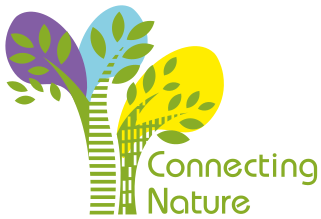Currently, over 50% (more than 4 billion) of the world's population lives in cities, and by 2050 this share is expected to rise to 68%, nearly 7 billion people. Responsible for 75% of global GHG emissions, cities' consumption patterns and changes in land use due to urbanization have a devastating impact on our biodiversity. As the world leaders confront the interconnected crises of climate change, biodiversity loss and COVID-19, cities have emerged as critical spaces for innovation to address these global risks. Transforming the relationship between cities and nature has the potential to increase urban resilience and relieve the environmental pressure caused by rising urbanization rates. To realize this potential, we need to accelerate the transition to nature-positive cities, or 'BiodiverCities', by 2030.
As a response, the BiodiverCities by 2030 Initiative, a partnership between the World Economic Forum, the Government of Colombia, and the Alexander von Humboldt Institute, has launched the UpLink BiodiverCities Challenge, in collaboration with Salesforce.
The BiodiverCities Challenge:
A global call for innovative solutions that are enabling cities to become nature-positive and fulfil their potential as engines of equitable and sustainable development, resilience, and well-being.
What are we looking for?
This challenge aims to identify, select, and showcase innovative solutions that have been successfully implemented and contribute to advancing the global transition to BiodiverCities by 2030, and help connect them to opportunities that can scale and accelerate their impact. We are looking for impactful and inspiring solutions that demonstrate disruptive potential from entrepreneurs, businesses, cities, or organizations, which have, at minimum, implemented a successful pilot, and ideally has been scaled or is ready to be scaled and replicated in cities around the world. This can include solutions, projects, or interventions, which are using tools or technologies which enhances biodiversity in urban areas; implementing green and blue infrastructure and restoration projects; providing new financial mechanisms or business models for solving cities' challenges through Nature-Based Solutions; contributing to the bioeconomy; or connecting urban dwellers to nature through innovative advocacy and engagement.
Why Apply?
The best 10-20 submissions will be selected as part of the winning cohort, recognized as UpLink Top Innovators. They will join the UpLink Innovator Network and participate in a one-year Top Innovator Programme, designed to accelerate impact and scale their venture by leveraging the World Economic Forum's and partner's broad range of opportunities and networks. This engagement programme is designed for the top leaders of the selected solutions (founders, CEOs, etc.) and will offer:
- Visibility: Public exposure via the Forum's and UpLink's digital media channels (public website, LinkedIn, Facebook and Twitter).
- Access: Opportunity to participate in exclusive World Economic Forum and UpLink events, communities, and projects, including access to the World Economic Forum's digital platform, TopLink.
- Connections: Introductions within the UpLink Community, partners, experts and investors, and the World Economic Forum's broader network.
- Expertise and Learning: Access to capacity building, learning opportunities and subject matter experts.
- Targeted Support: Dedicated UpLink Curator support throughout the programme.
The programme's objective is to support the Top Innovators gain visibility, attracting partners and funding to scale their solution and ultimately accelerating their impact.
We are accepting submissions from 28 October to 1 December 2021
To learn more, please read below and refer to the focus areas and FAQs section on the side menu. Alternatively, you can also use the feed below to ask questions to the UpLink curator and the community.
Click here for more information
